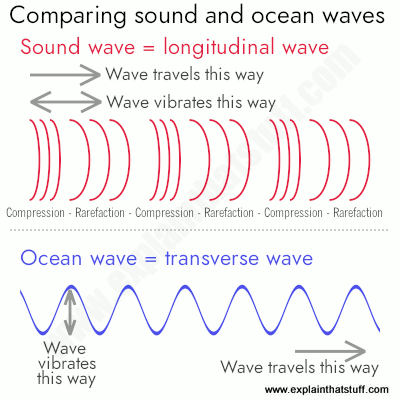How Do Noise-Canceling Headphones Work?
Upon your quest for new headphones, it’s likely that you have found a pair or two with active noise canceling (ANC). What are noise canceling headphones and how do they work?
It’s often thrown around that listening to your favorite music in the best possible quality requires you to spend as much as you can. This isn’t really very true though. At least it isn’t anymore. If we all had access to one, we’d listen to our music in soundproof environments. This cuts out the unwanted noise of daily life that overpowers our music so we can just tuck into the track and vibe all day long. For a top-quality listening experience, noise-canceling headphones emulate a soundproof environment, remove unwanted noise, and deliver nothing but tunes directly to your ear.
A small number of companies have gotten so good at producing active noise canceling in their headphone that it’s now their main selling point. This begs the question: how do noise-canceling headphones work?
How Sound Works
Sound as we hear it is simply compression and decompression of particles in a medium the sound is traveling through. In most cases, the medium is air. A soundwave has positive and negative points and looks like a ripple in the water, so let’s think of it as such.

When you are walking through water (unless you can walk on water), you cause ripples that push anything close to you away from you because of the force of the ripples. Sound, on the other hand, is moving particles in the air that lead to changes in air pressure. What do we call the measure of these air pressure changes? Amplitude!
However subtle or drastic the air pressure changes that a sound will cause depends on how much amplitude it has. Both our ears and brain work together to pick up and decipher the changes in pressure as sound.
By charting the amplitude of sound, you’ll discover why sound does look like a ripple in the first place. Your end result will look like the waveform pictured below. The bigger the amplitude is, the bigger the sound. The faster the pressure changes, the higher the pitch of the sound.
What Are Nose Cancelling Headphones?
Noise-canceling headphones are headphones that attenuate and work to diminish unwanted ambient sounds using active noise control. Noise cancellation thus allows us to enjoy our music, podcasts, or any other audio content without the outside world interrupting. This means we don’t need to touch the volume controls as much too!
How Noise Cancelling Headphones Work
Headphones with active noise canceling sample the environment around you and cancel ambient noise by using what we call “phase inversion”. Phase inversion creates “anti-noise.”
But what is phase? Let’s say you had the chance to physically hold two soundwaves in your hand. If the two soundwaves linked up with one other and their peaks and troughs were in identical places, the two waves are “in-phase”. This allows you to sum the two soundwaves together in an even larger soundwave and get a louder sound.
It’s a different story if the two soundwaves aren’t in phase though. If one soundwave reaches your ears with a slight delay of one-half wavelength (half a wave cycle), then matching up the peaks and troughs is impossible and the soundwaves are out of phase.
When two waves are out of phase they actually subtract from one another because the positive pressures of one wave fight the negative pressures of the other, and vice versa. When you add 1 & -1 together you get 0. It’s the same principle with summing two soundwaves that are out of phase with one another, and it’s the physics behind noise cancellation.
To create anti-noise, headphones monitor and sample ambient noise in your environment by using very small microphones built into the headphones. They actively listen to the noise around you and the electronics inside the headphones create sound waves that have phase values directly opposite to the noise and cancel it out.
As well as your music, the headphones create sound that is exactly opposite to that sound wave to cancel it out so that all you should hear is the music coming from your headphones—and not anything going on outside.
Sound Guys
It’s easy for us to talk about noise-canceling in theory. It’s much harder to pull off in practice and, in truth, is still a developing technology that’s far from perfect. Constant noises like the low hums of jet engines on airplanes are easier for headphones to recognize and cancel when compared to sudden, random sounds like people talking.
Producing music in a soundproof environment allows us to accurately hear what it is we’re doing inside our DAW. Is your DAW thirsty for some new & exciting sounds?
The sampling revolution has risen in popularity and shaped music since the early 1970s. Sample culture continues to transform how millions of artists and producers do their thing in DAWs.
You too can break conventional norms, challenge the status quo, and open Pandora’s box of sound design.
Mixxed works with a growing number of sample labels and contributors to provide you with an affordable sample subscription service that’s more accessible than any before.
You’ll have access to our growing catalogue of loops, one-shots and sound effects that you can browse, download and keep forever for less than $3 a month.
Sign up today to find your sound!
